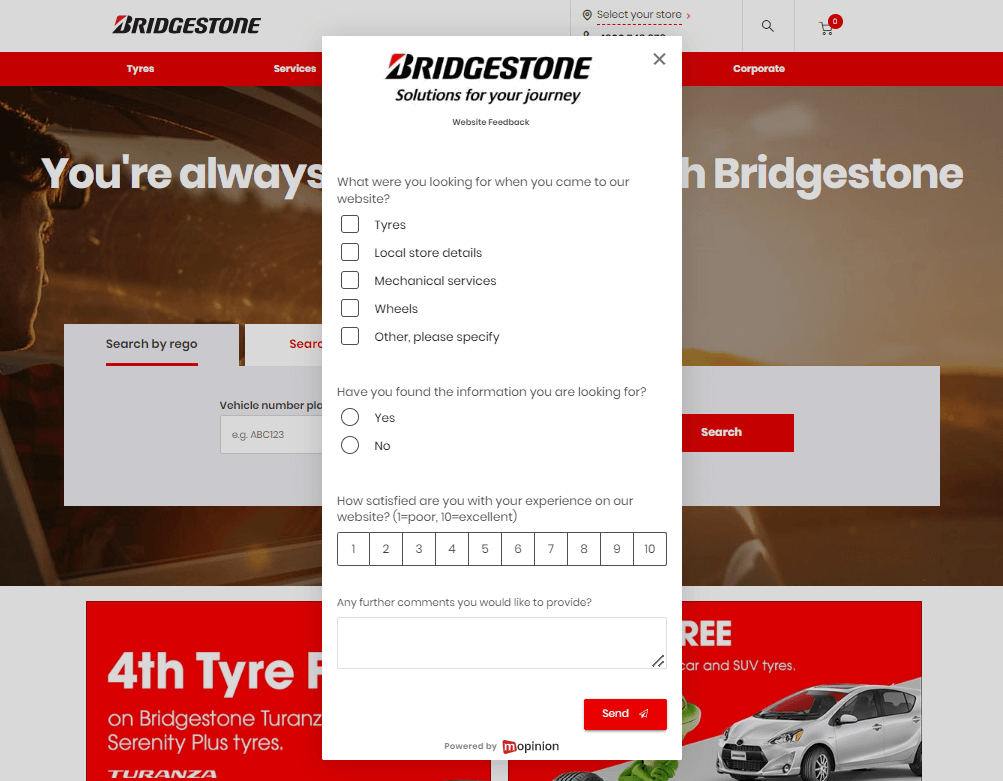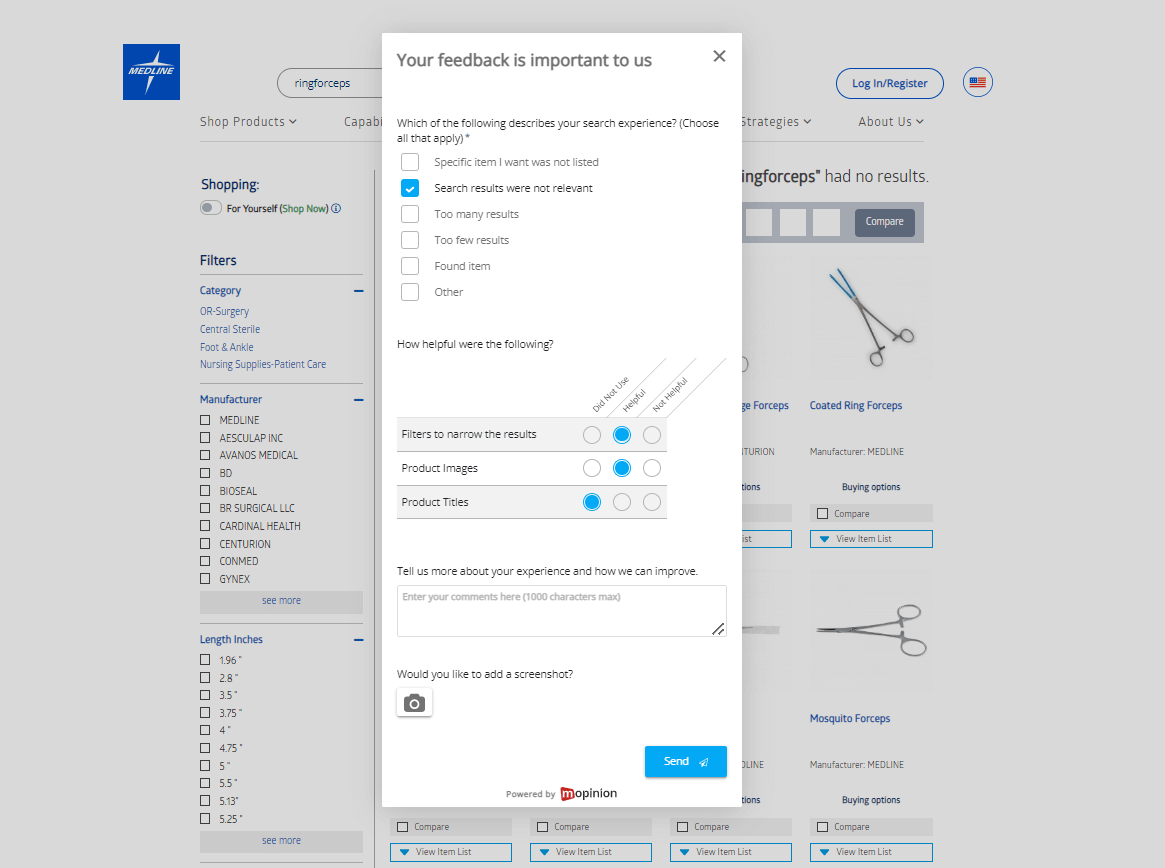Looking for a way to understand your customers better and improve your user experience? User experience (UX) surveys are one of the most effective ways to do it. According to Forbes, a well-designed user interface can boost website conversion rates by up to 200%.
UX surveys help you uncover pain points, track behaviour, and identify trends so you can create experiences that drive loyalty and conversion. Let’s explore what UX really means, why these surveys are important, and the best practices for conducting them.
But where do you start? What constitutes a ‘good’ user experience survey? And what are the best practices for conducting these surveys? Let’s dive in.
What is User Experience (UX) and why is it important?
UX refers to the overall impression a user has when interacting with your website, app, or product, including usability, design, and functionality. A great UX boosts satisfaction, loyalty, and revenue, while a poor UX can quickly drive customers away.
Monitoring the user experience is typically done by way of user experience tracking tools such as:
- UX analytics and event-tracking tools
- Session recording and heatmapping tools
- A/B and split testing tools
- design and wireframing tools
- usability feedback tools
However, in this article we will focus on how to collect feedback (via user experience surveys).
Creating a good user experience can increase customer loyalty, conversion and overall revenue, whereas a bad experience can have the exact opposite effect. In other words: Make sure your users and customers are having a good time when they interact with your business!
User experience vs user interface: What is the difference?
Both the terms UI (user interface) and UX (user experience) comes up often when product development is discussed. Sometimes they are used almost interchangeably, which is why it can be tricky to keep the two terms apart.
UI refers to the visual aspects of a software, website or app. It includes buttons, images, icons, screens and more. As stated above, the user experience refers to the entire impression a user has when interacting with a product. Both the practical experience around it and how the user feels about the product.
Knowing how users feel about interacting with your product has many benefits that can lead to an overall, better UX. So let’s take a look at some different ways of how to gather user experience insights with feedback.

Here are the Hottest UX blogs you should be following
Stay up-to-date with the latest trends in user experience
Benefits of Conducting User Experience Surveys
User experience surveys are considered very beneficial to organisations for many reasons, including:
- They help gain a better understanding of user needs. User experience surveys give insight into the needs and expectations of your users by gathering information about pain points, features that they do or don’t like, and areas in which you can improve.
- Identifying key trends and patterns. UX surveys, if conducted properly, can reveal important trends taking place on your digital channel(s) and tell you a lot about user behaviour and preferences over time. This is important as user needs change on a regular basis.
- Validating your assumptions. Considering they enable you to test different assumptions, user experience surveys can give your optimisation efforts a serious boost. The feedback gathered in surveys will tell you whether a certain design or feature works for your users. In fact, that’s what makes user feedback so critical for UX designers.
- Improving overall product design. Leveraging the insights gained from your user experience surveys, you can make more informed decisions about both product design and development. In the long run, this will also save you time and money otherwise spent on resources or features that wouldn’t be as successful.
What Should You Ask in a User Experience Survey?
These types of UX surveys can be used just about anywhere within your product or on your digital channels (i.e website or mobile apps). This means that the kind of questions you would ask depends on what you want to know.
Are you curious about your checkout experience? Then ask about that on the appropriate page! Would you want to know more about a certain feature? Then you would naturally ask about that instead.
These are a few examples of typical questions that would be included in a user experience survey:
- Rate your experience with our product/website.
- How satisfied are you with your experience?
- How do you feel about our brand?
- What score would you give the product/website?
- Did you find our website / mobile app easy to navigate?
- Do you think our product is easy to use?

Example of a general UX survey on Bridgestone.com.au.
Let’s take a look at different kinds of UX surveys and some questions you could use in them to get your creative gears turning. First up:
Customer satisfaction UX surveys
These user experience surveys are great for monitoring loyalty and retention. They are used to measure the satisfaction of your users both during and after interacting with your product or website. They typically include questions like:
- How likely are you to recommend our product/website to a friend or family member?
- How would you rate your overall satisfaction with our product / website?
- What do you like most about our product / website?

Example of an NPS survey in Meistertask.
In-depth research surveys
These are typically longer, more in-depth surveys (as opposed to the microsurveys showcased above). In addition to panel research and interviews, UX research surveys can tell you a lot about the UX as a whole, from users who are willing to take the time and share all of the ins and outs of their experience.
These types of surveys are typically conducted via email so as not to disturb the UX while a user interacts with your product.
When it comes to defining which questions to ask in a survey like this, there isn’t a cookie cutter approach. A UX research survey should incorporate questions that meet the needs of the team conducting the research and is therefore not applicable in all scenarios.
However, here are some questions that are commonly asked in these kinds of surveys:
- What are your first impressions with the product / website?
- Why did you start using our product?
- How useful is our product / website to you?
- Tell us about your experience using our product / website?
- How would you rate the user-friendliness of our product interface?

Example of an in-depth UX survey from the Medline website.
How to Design an Effective User Experience Survey
When designing a user experience survey, there are a couple of things to consider.
For example, how your questions are formulated (tone of voice, length of each question, etc.) and if the survey is relevant to the user at that moment.
Let’s take a look at some tricks for designing a good user experience survey:
Decide the focus of the survey
This is the best place to start when designing a new user experience survey. Every survey serves an important purpose and if that purpose is misplaced, odds are the user will be more reluctant to complete the survey.
Define what you will use the survey for, what you hope to achieve with the results from the survey and from there you can start formulating your question(s).
Keep the survey short and concise
Two to three questions is typically the most optimal choice when creating surveys. It’s your best bet in increasing your survey response rates and keeping the user engaged. There are cases in which you will perhaps need to use a longer survey, i.e. in-depth UX research surveys.
In this case, be sure to inform your users of their progress and give them an idea of the estimated time they will spend on it beforehand. This will reduce unnecessary frustration brought on by not knowing how much longer the survey will take to complete.

Make sure questions are relevant to your users
Surprisingly, this is a major frustration among many respondents when taking any type of feedback survey. Being prompted with a question that doesn’t apply to you is not only annoying, but also time-consuming. To avoid this issue altogether, there are some feedback solutions, like Mopinion, that offer question routing (or survey logic) capabilities.
When building your surveys, you can create different questions that will be displayed depending on the answer to the previous question. This not only makes the questions more relevant for the respondent (and thus giving them a tailored experience), but it will also give your organisation more useful feedback data as a result.
Do you need inspiration on what to ask in your UX feedback form? Check out our blog on everything you need to know about survey questions.

Mopinion for UX & Design Experts
Cut through the clutter and give your UX the attention it deserves
Use both quantitative and qualitative questions
Best practice is to start the survey with a quantitative question, i.e. a metric such as Net Promoter Score or another type of rating. That way you have data that can quickly and easily be analysed.
This type of data is also better for recognising major trends within your data. However, quantitative data alone doesn’t tell you everything you need to know about the user experience.
That is why it’s important to incorporate qualitative questions such as why they came to your website in the first place, or why they came back for a second or third visit. You can ask them how they experienced your product/website directly after they completed a specific action.
Additionally, you can add open answer questions at the bottom of your surveys, enabling your users to provide any additional comments they may have.
Read more about this topic in our post about quantitative and qualitative data.
Start creating those user experience surveys!
User experience surveys are powerful tools for creating customer journeys that delight. By asking the right questions at the right time, you’ll uncover insights that drive loyalty, improve design, and boost conversions.
Mopinion is an all-in-one user feedback tool that helps organisations collect and analyse website, mobile and email campaign user feedback. It has an easy-to-use interface, with which users can build, design and configure feedback forms however they like.
Mopinion users can also target specific groups of visitors with feedback forms and gain insights into why they are struggling to convert. Once collected, feedback items can be visualised in customisable dashboards and charts for advanced analyses. Additionally, digital teams can share and take action on these feedback items in a timely manner with the help of smart alerts.
Ready to see Mopinion in action?
Want to learn more about Mopinion’s all-in-1 user feedback platform? Don’t be shy and take our software for a spin! Do you prefer it a bit more personal? Just book a demo. One of our feedback pro’s will guide you through the software and answer any questions you may have.







